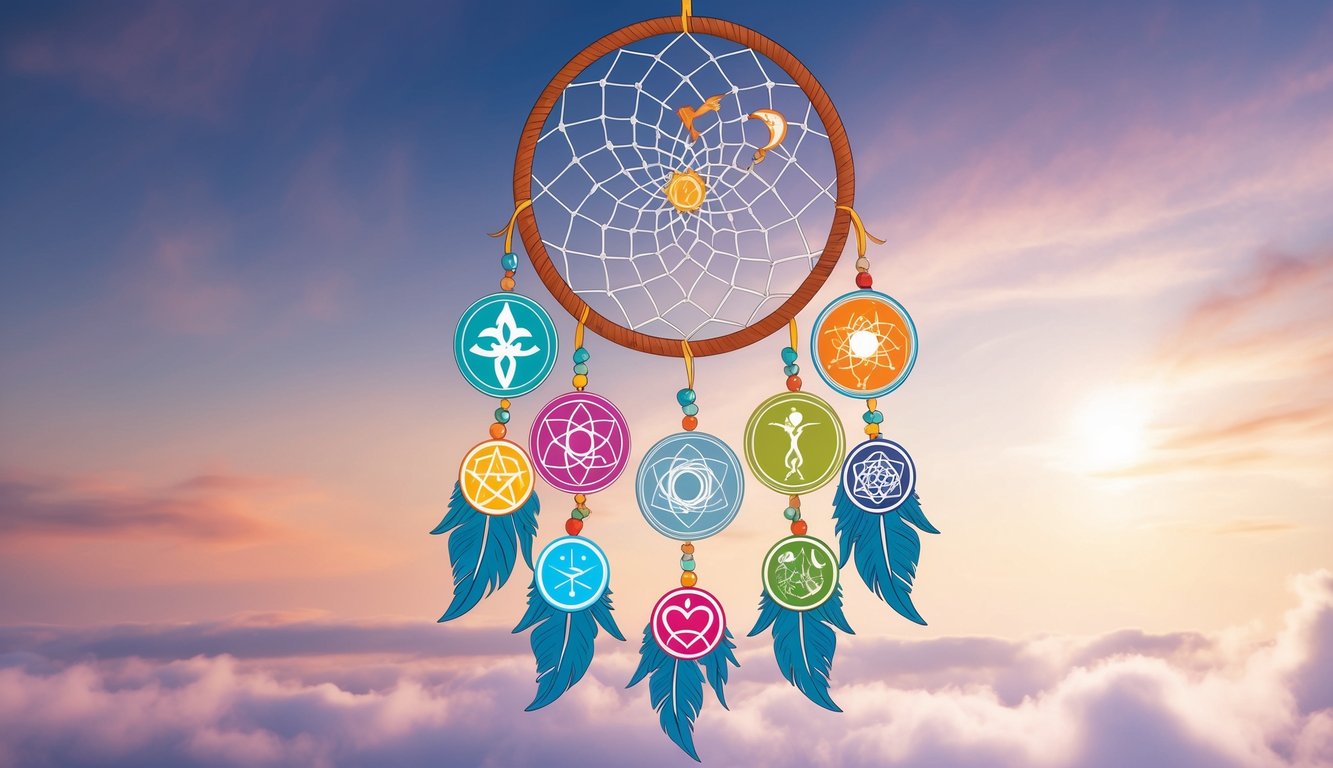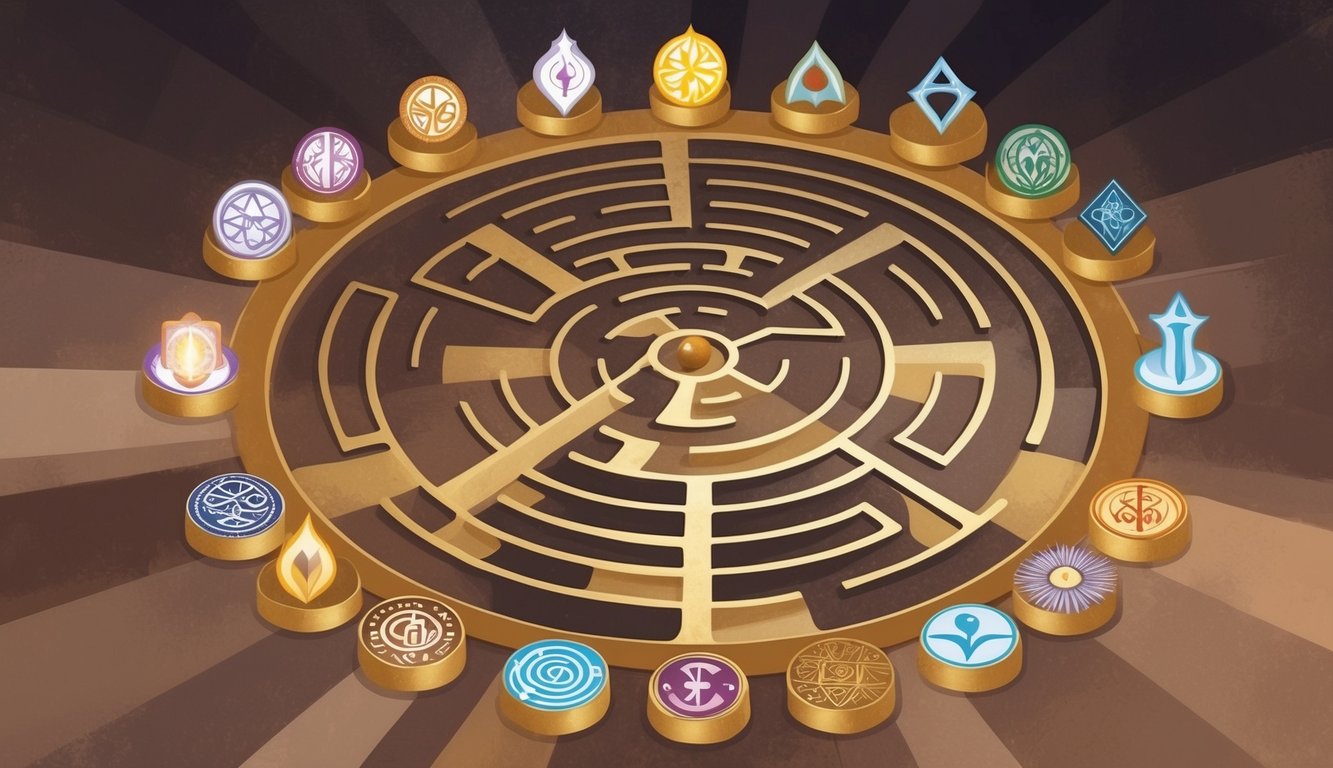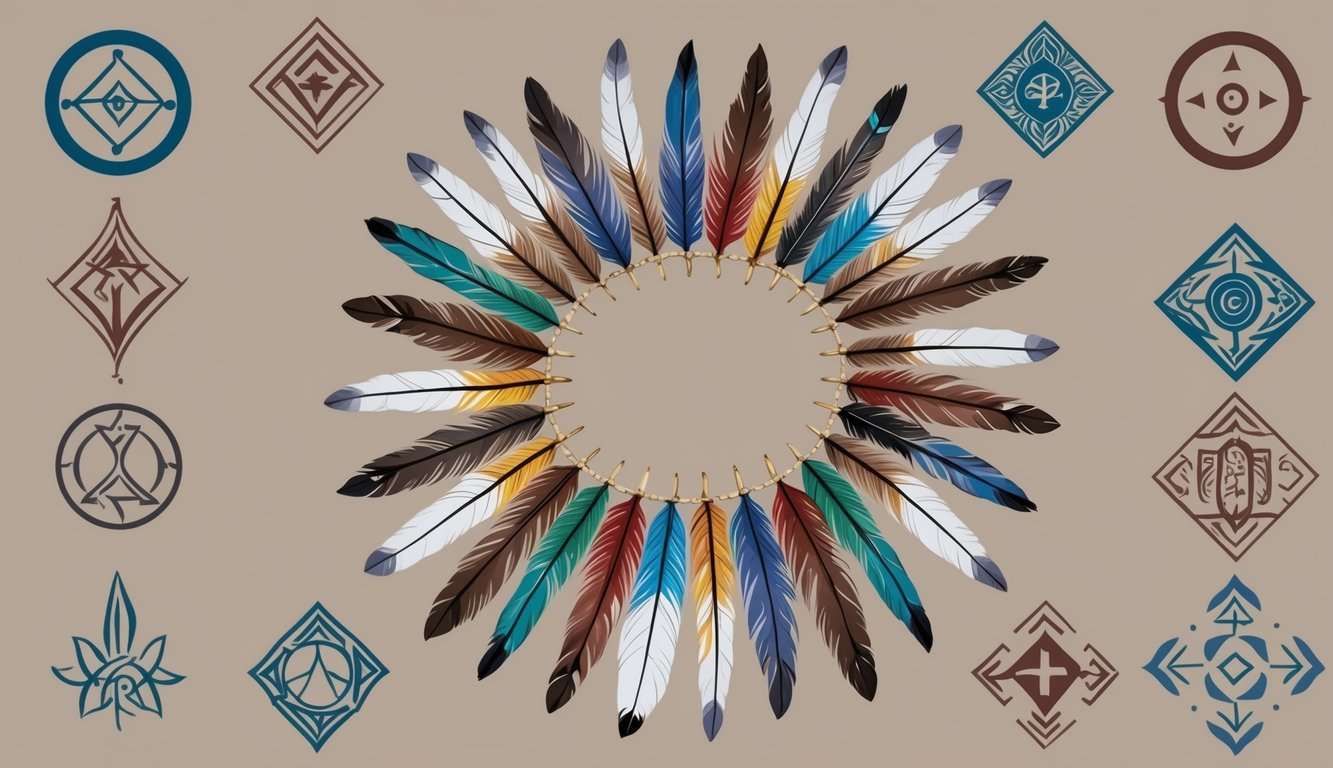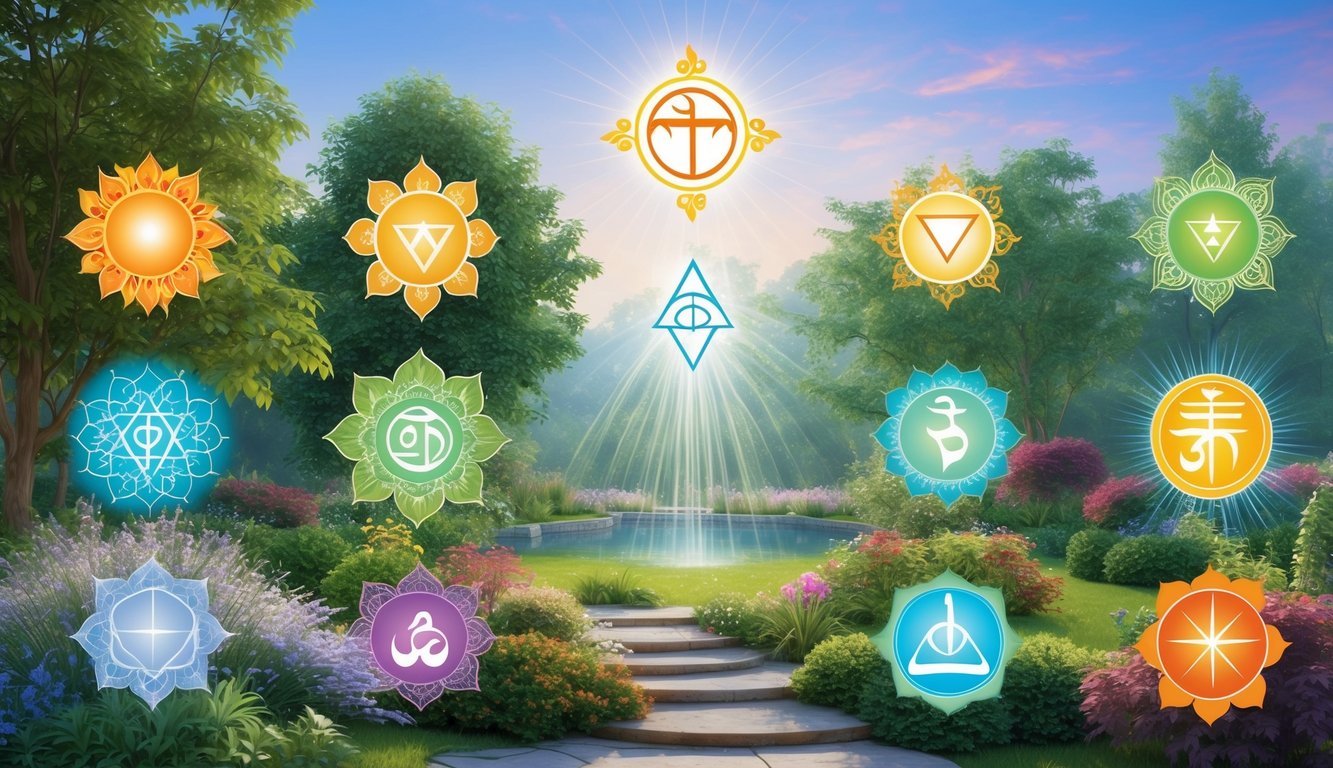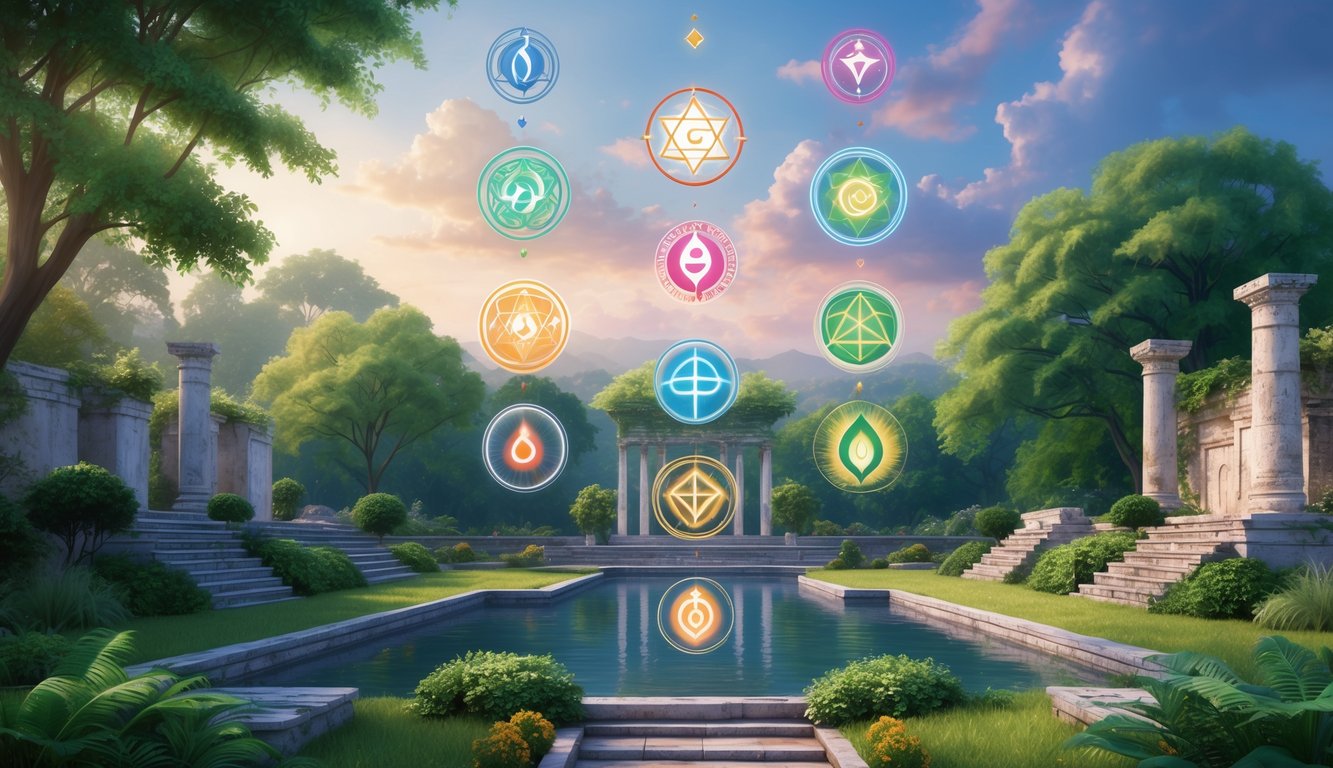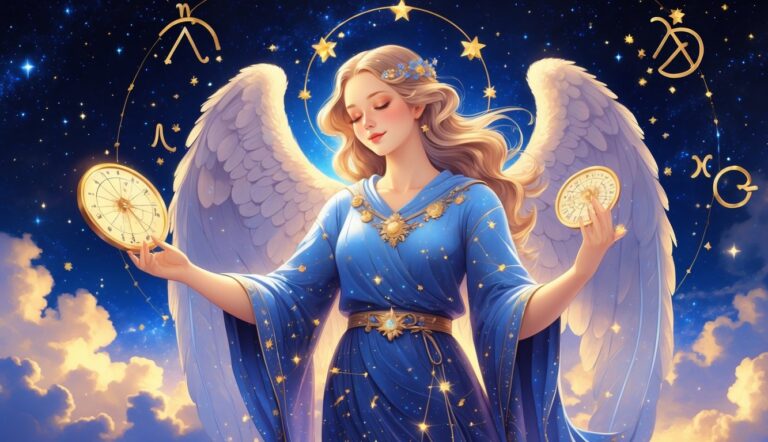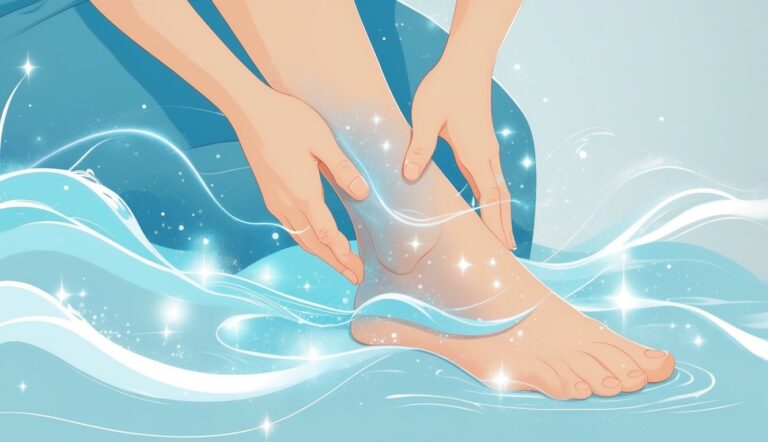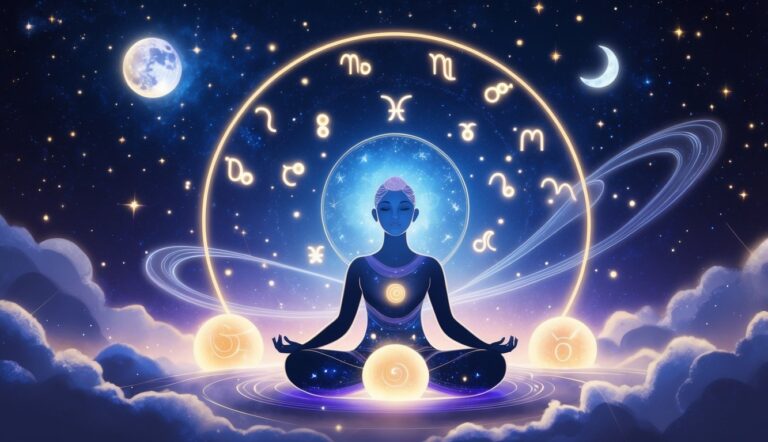Align Your Life with Your True North
The Power Quadrant System decodes your natural talents and pinpoints the career, timing and relationships that let you earn more, love deeper, and wake up eager for the day.
- Uncover your #1 high-income strength
- Draw in partners who raise your energy
- Work when your body’s clock is in “flow”
Exploring spiritual symbols can deepen your understanding of various cultures and their beliefs.
These symbols often carry profound meanings that can resonate with your own life experiences. By uncovering their hidden meanings, you can gain insights into your personal spiritual journey and connect with timeless wisdom.
From ancient emblems to modern interpretations, spiritual symbols serve as a bridge between the physical and spiritual realms.
Engaging with these symbols can enhance your perspective on life’s challenges and transformations.
Embrace this opportunity to discover how these symbols can empower you and bring clarity to your path.
1) Lotus Flower
The lotus flower is a fascinating symbol with deep spiritual significance.
It represents purity and spiritual cleanliness, emerging from muddy waters to bloom beautifully.
This transformation resonates with personal growth and resilience.
As you journey through life, the lotus can inspire you to rise above challenges.
Its gradual blooming process, petal by petal, reflects the steps you take toward enlightenment and self-discovery.
Different colors of lotus flowers carry unique meanings.
Decode Your Personal Success Blueprint
Power Quadrant System shows you the exact career, relationships, and daily rhythm that match your natural DNA—so you earn more, work happier, and connect deeper.
- Pinpoint your #1 money-making talent
- Erase conflict & attract ideal partners
- Multiply productivity with perfect timing
For example, a white lotus often symbolizes purity and peace, while a pink lotus represents spiritual awakening.
In various cultures, the lotus holds a prominent place.
In Hinduism, it is associated with divine beauty and fertility, making it a powerful symbol of creation and life.
Embracing the essence of the lotus flower can encourage you to let go of emotional baggage and cultivate inner peace.
2) Ankh
The Ankh is an ancient Egyptian symbol often referred to as the “key of life.” Its design looks like a cross with a loop at the top, making it quite distinctive.
In spiritual terms, the Ankh represents eternal life.
It signifies the connection between life, death, and rebirth.
This cyclical nature of existence reminds you that endings can lead to new beginnings.
Tap Into Your Built-In Success GPS
The Power Quadrant System deciphers your genetic blueprint so you can lock onto the career, income and relationships that feel effortless—and wildly rewarding.
- Zero in on your natural high-earning genius
- Sync with partners who boost your vibe
- Wake up driven, finish days fulfilled
You might think of the Ankh as a bridge between the physical and spiritual realms.
The cross part embodies the here and now, while the loop symbolizes the eternal.
This balance promotes harmony in your life.
Historically, the Ankh was used in hieroglyphics and often associated with gods and goddesses.
It served as a tool for spiritual protection and guidance.
By embracing the Ankh, you tap into themes of spiritual growth and awakening.
It encourages you to seek wisdom and understanding as you navigate through challenges.
3) Hamsa Hand
The Hamsa Hand is a significant symbol found in various cultures, particularly in the Middle East.
It represents protection, strength, and blessings.
Many people wear it as an amulet to ward off negative energies.
Often depicted with an open palm, the Hamsa is believed to guard against the evil eye.
This concept suggests that it can shield you from harm and bring good fortune.
In Kabbalah, it symbolizes the Five Divine Presences, connecting you to a deeper spiritual awareness.
In Islamic culture, it’s seen as the Hand of God, emphasizing its protective and powerful attributes.
Some designs include an eye at the center, known as the eye of Fatima.
This element enhances its protective qualities, making it even more meaningful.
The Hamsa Hand transcends cultural barriers, offering a universal message of safety and divine connection.
It’s both a beautiful piece of art and a symbol of hope and security in your life.
4) Tree of Life
The Tree of Life is a fascinating symbol rich in meaning.
It represents the connection between all living things and reminds you of your roots and growth.
In various cultures, this symbol signifies life’s interconnections.
It speaks to how your past influences your present and shapes your future.
The branches often symbolize family and ancestry, illustrating how you are part of a larger story.
You might also see the Tree of Life as a representation of strength and resilience.
Its deep roots ground you, while its branches reach for new heights.
This balance encourages you to embrace life’s challenges and opportunities.
The Tree of Life’s presence in sacred texts, such as the Bible, adds another layer to its significance.
It serves as a bridge between the physical and spiritual worlds, inviting you to explore your own journey.
Whether you wear it as jewelry or display it in your home, the Tree of Life can inspire you to connect with nature and your own personal growth.
It’s a reminder that you are part of something much bigger.
5) Om
Om is a sacred symbol in Hinduism, Buddhism, and Jainism.
You might recognize it as a mantra often chanted during meditation.
This sound represents the fundamental vibration of the universe.
Chanting Om helps create a sense of calm and peace.
The vibrations resonate within you, calming the nervous system and reducing stress.
It’s more than just a sound; it’s a tool for spiritual growth.
The symbol features elegant curves that embody profound meanings.
Om symbolizes creation, life energy, and ultimate reality.
It’s seen as the essence of your inner self and consciousness.
In many spiritual practices, you may find Om depicted in art, manuscripts, and temples.
Its presence is a reminder of the connection between you and the universe, reflecting the eternal nature of existence.
Embracing Om can be a simple yet powerful way to deepen your spiritual journey.
6) Yin Yang
Yin Yang is a powerful symbol representing balance and harmony in life.
It shows how two opposite forces coexist and complement each other.
Yin, represented by the black portion, is linked to qualities like darkness, receptivity, and femininity.
Think of it as embodying the calming energy of the moon and Earth.
Yang, on the other hand, is the white part that symbolizes brightness, activity, and masculinity.
It represents the assertive and energetic aspects of life.
This symbol teaches you that both light and dark are necessary.
Each side brings its own value and perspective.
When you embrace this balance within yourself, you’ll find greater harmony in your world.
The Yin Yang reminds you that everything has its place, and achieving equilibrium is key to wellbeing.
7) Mandala
A mandala is more than just a pretty design.
The term comes from Sanskrit, meaning “circle.” This shape symbolizes unity and wholeness.
When you look at a mandala, you might notice how its geometric patterns create a sense of balance.
This is intentional, as mandalas represent the universe and the interconnectedness of life.
People often use mandalas in meditation.
Coloring or creating them can help you focus and reflect on your emotions.
It’s a non-judgmental way to explore your thoughts.
Different cultures have their own styles of mandalas, but they all share that core significance.
Engaging with these symbols can promote inner peace and harmony, making them powerful tools for spiritual growth.
8) Eye of Horus
The Eye of Horus is a cool symbol from ancient Egypt, known for its power and protection.
It represents the eye of Horus, the falcon god, who lost his eye during a battle for the throne but had it magically restored.
This story gives the symbol its strong association with healing.
You might see the Eye of Horus as a sign of safeguarding, good health, and royal authority.
People believed it could ward off evil and misfortune, making it a popular amulet.
It’s like having a personal protector wherever you go.
Each part of the symbol has specific meanings.
For example, it reflects balance, unity, and the importance of harmony in your life.
Overall, the Eye of Horus serves as a reminder that strength can come from overcoming challenges and restoring what was once lost.
Incorporating this symbol into your life could inspire resilience and a sense of security.
Whether you wear it as jewelry or display it in your space, the Eye of Horus connects you to its rich history and protective qualities.
9) Dreamcatcher
Dreamcatchers are fascinating symbols rooted in Native American culture.
Originally, they were made using wooden hoops, sinew, and natural materials like feathers and beads.
You may know that dreamcatchers are believed to filter dreams.
The intricate web inside traps bad dreams while allowing positive ones to pass through.
This makes them not just decorative but a way to promote good sleep.
The various colors used in dreamcatchers also hold meaning.
For instance, white symbolizes purity, while red represents passion and love.
Each color contributes to the dreamcatcher’s overall symbolism.
Using a dreamcatcher can create a calming presence in your space.
Whether you hang one in your bedroom or carry a small one for personal meaning, they can serve as protective talismans in your life.
10) Labyrinth
The labyrinth is a fascinating spiritual symbol.
It represents a winding path that mirrors your life’s journey.
Unlike a maze, there’s only one path leading to the center and back out.
As you walk a labyrinth, think of it as a metaphor for self-discovery.
Each twist and turn reflects the paths you take in life.
Reaching the center can symbolize finding your true essence or inner peace.
Many cultures have used labyrinths for meditation and reflection.
They’ve been a part of rituals for centuries, helping people connect with their spiritual selves.
Next time you encounter a labyrinth, consider what it means for your journey.
Embrace the experience and allow it to guide you toward greater understanding and personal growth.
11) Feather
Feathers carry deep spiritual significance across many cultures.
You might notice them appearing unexpectedly in your life, which some believe signals guidance from angels or spirit guides.
The colors of feathers often play a role in their meanings.
For example, white feathers typically represent purity and light, while brown ones might symbolize earthiness and stability.
When you find a feather, it may also serve as a reminder that you are connected to something greater.
Each feather serves as a gentle nudge to trust your intuition and remember that you’re not alone on your journey.
Feathers have been used in various spiritual practices, from Native American traditions to modern rituals.
They can symbolize hope, protection, and even the ability to rise above challenges.
Embracing feather encounters can enhance your spiritual journey.
Take a moment to reflect on what the feather means to you personally.
They can offer comfort and reassurance, reminding you of your own ability to soar.
12) Dove
Doves are often seen as symbols of peace and love.
Their gentle nature makes them easy to associate with harmony and tranquility.
In many cultures, doves serve as messengers of the divine.
They can represent spiritual guidance, inviting you to connect with a higher purpose.
When a dove appears in your life, it can be a reminder to embrace compassion and humility.
This is especially relevant during challenging times.
You might notice doves carrying olive branches, a classic symbol of peace.
This imagery highlights their role in promoting reconciliation and hope.
Different colored doves can convey various meanings.
While white doves are most commonly associated with purity, other colors may symbolize specific emotional states or spiritual messages.
If you feel drawn to doves, consider observing their behavior.
This can offer insights into your own journey and help you cultivate a sense of inner calm.
The Power of Spiritual Symbols
Spiritual symbols play a significant role in shaping your experiences and understanding of the world.
They carry deep meanings and resonate with your beliefs, guiding you through various stages of life.
These symbols often have rich historical and cultural significance, connecting you to ancient traditions and wisdom.
By exploring a spirituality glossary, you can deepen your understanding of these symbols and their meanings across different belief systems.
Recognizing these symbols in daily life can provide insight, comfort, and a sense of purpose on your spiritual journey.
How Symbols Influence Our Lives
Symbols can profoundly influence your thoughts, feelings, and actions.
They connect you to a larger narrative, offering insights into your spiritual journey.
For example, the Yin Yang represents balance, reminding you to seek harmony in your life.
The Lotus Flower symbolizes purity and resilience, encouraging growth through challenging times.
Using symbols can bring comfort and clarity.
You might wear jewelry featuring your favorite symbol to feel empowered throughout the day.
Alternatively, placing symbols in your living space can create an atmosphere that promotes peace and focus.
Understanding Symbolic Language
Symbols often serve as a universal language, enabling you to communicate complex ideas without words.
Each symbol carries layers of meaning that can vary across cultures and personal beliefs.
For instance, the Ankh, with its depiction of life and eternal existence, resonates in many spiritual practices.
You can explore these meanings by learning their historical context and significance in different traditions.
Keeping a journal of your experiences can enhance your understanding.
Whenever you encounter a symbol, take a moment to reflect on how it speaks to you personally.
Consider what emotions or thoughts it evokes, which can deepen your spiritual insight.
Connecting with Ancient Wisdom
Exploring spiritual symbols can deepen your connection to ancient wisdom.
These symbols offer insights that can guide you on your personal journey.
Let’s break down how different cultures interpret these symbols and how they resonate in modern contexts.
Symbols Across Different Cultures
Many cultures have unique symbols that convey profound meanings.
For example, the Om Symbol is central in Hinduism, representing the universe and ultimate reality.
It encompasses the essence of the spiritual journey and is often used in meditation.
The Ankh, originating from ancient Egypt, symbolizes life and immortality.
It reminds you of your connection to the cycles of life.
Similarly, the Yin Yang from Chinese philosophy illustrates balance and duality.
Understanding these symbols can enhance your appreciation for diverse spiritual practices.
Modern Interpretations of Symbols
Ancient symbols still hold significance in today’s world.
They’re often reimagined in art, fashion, and personal practices.
For instance, the Hamsa Hand is popular in jewelry.
It symbolizes protection and warding off negativity.
Modern interpretations may also blend traditional meanings with personal experiences.
The Lotus Flower, which signifies purity and resilience, can inspire you to overcome challenges.
By adopting these symbols into your life, you can cultivate hope and strength.
This makes ancient wisdom relevant to your personal growth.






